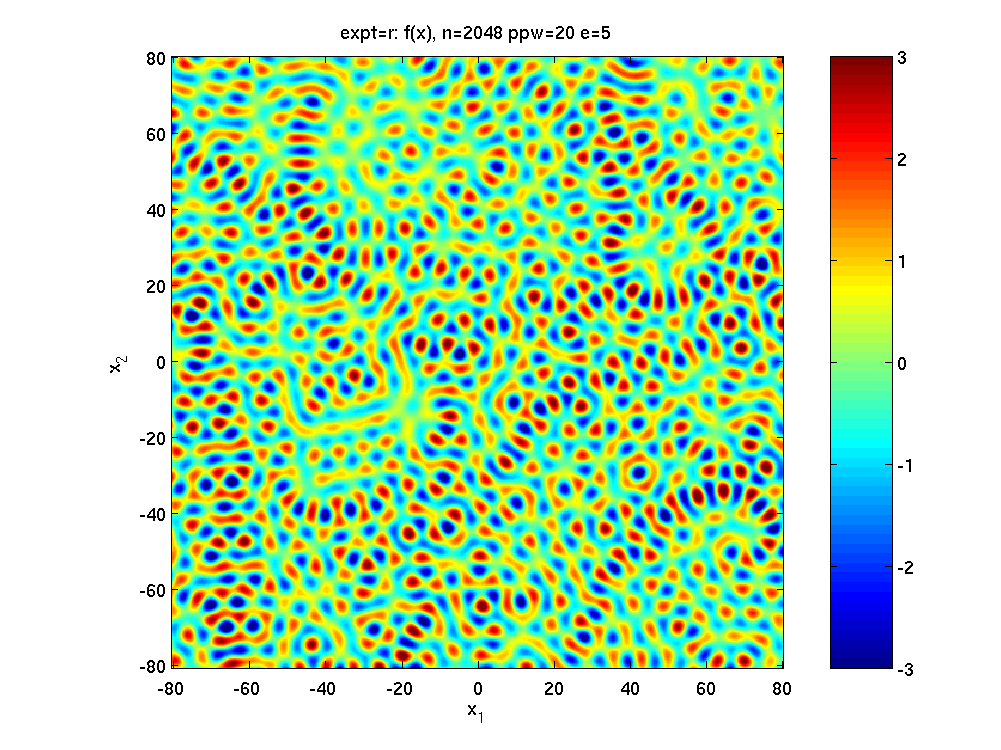

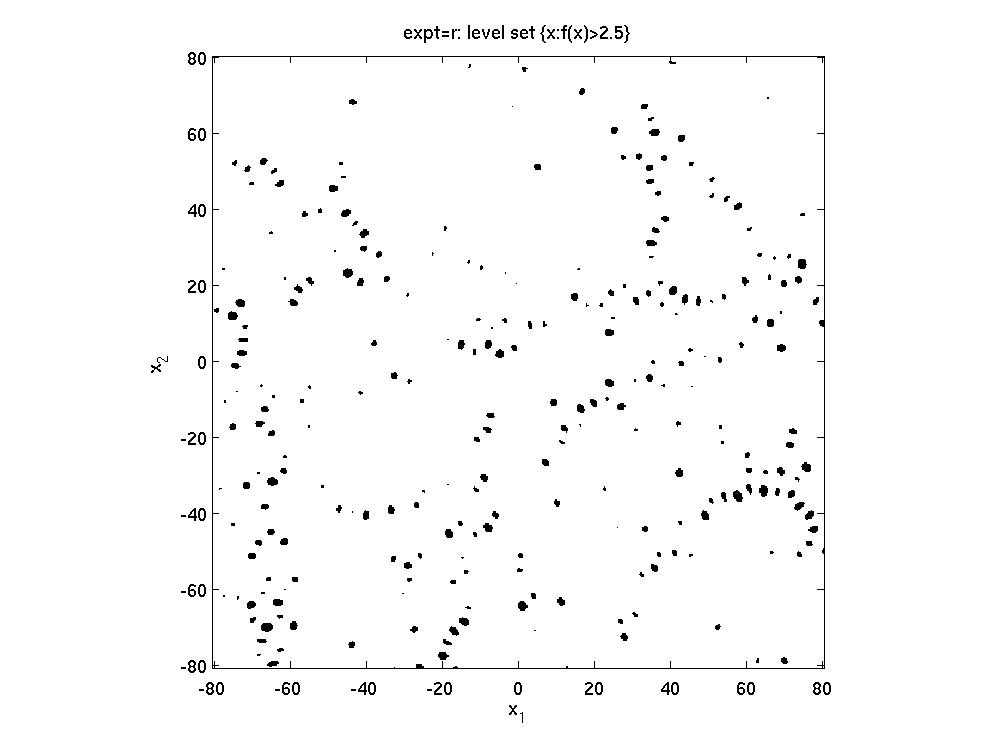
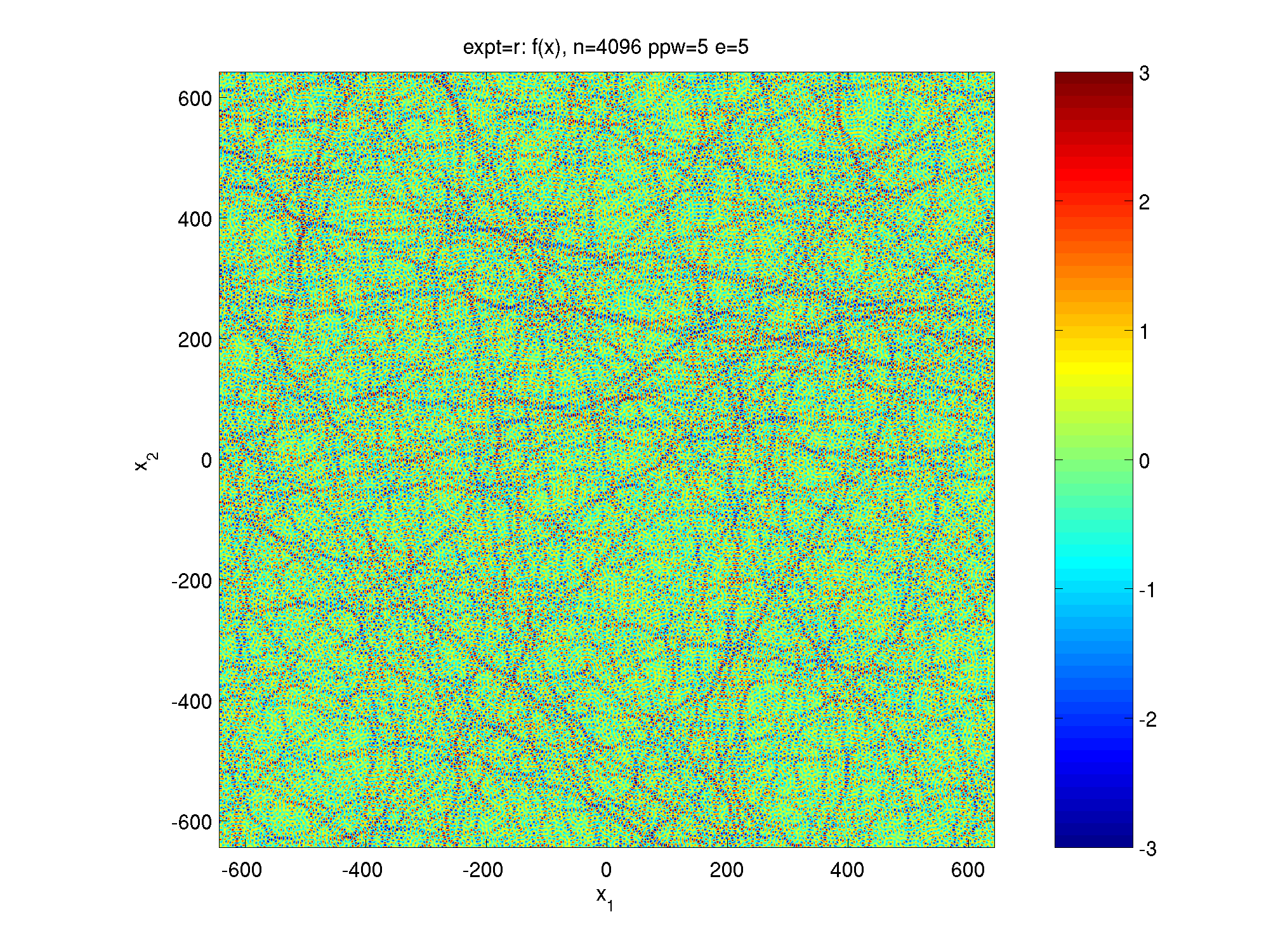
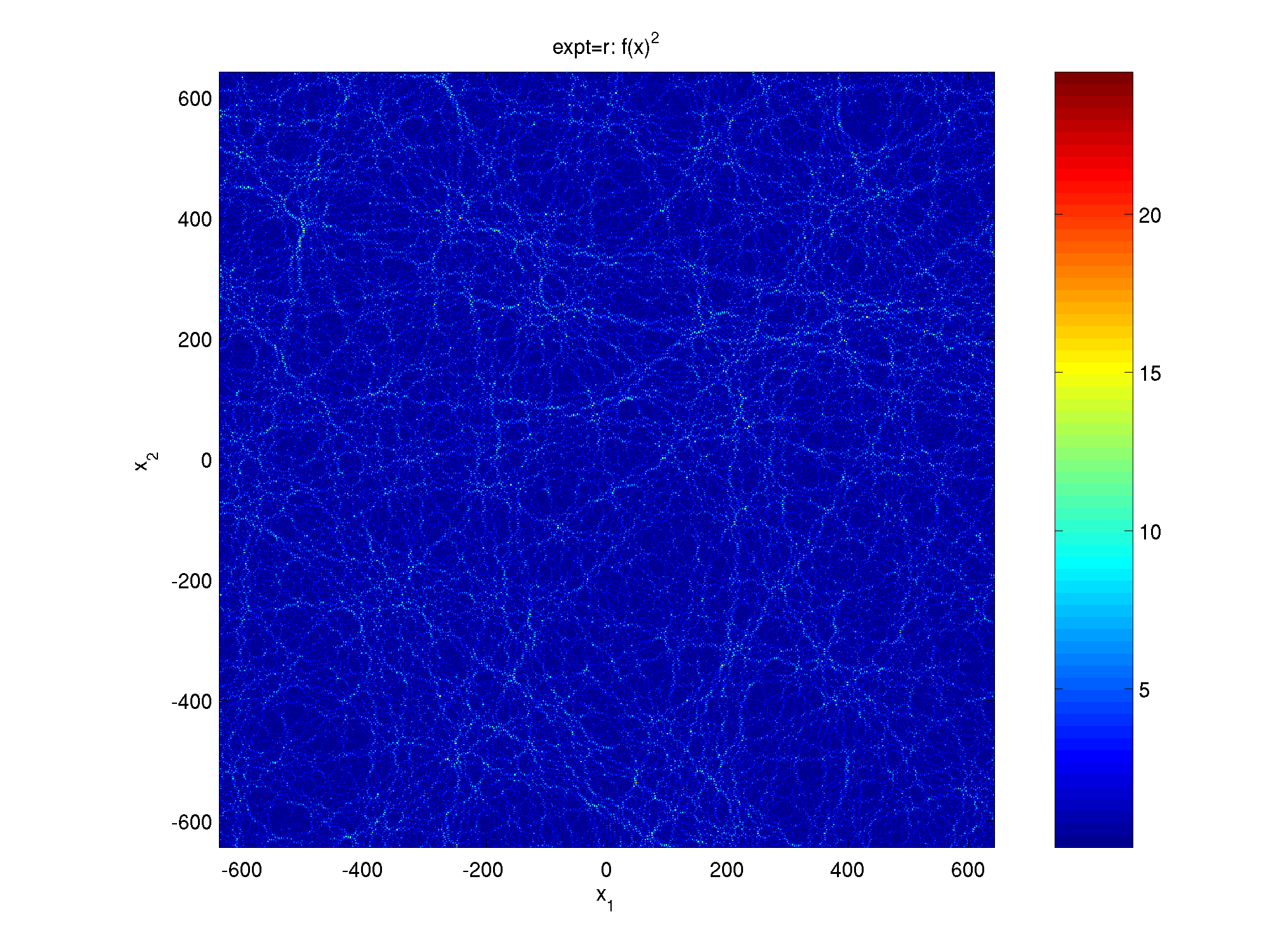
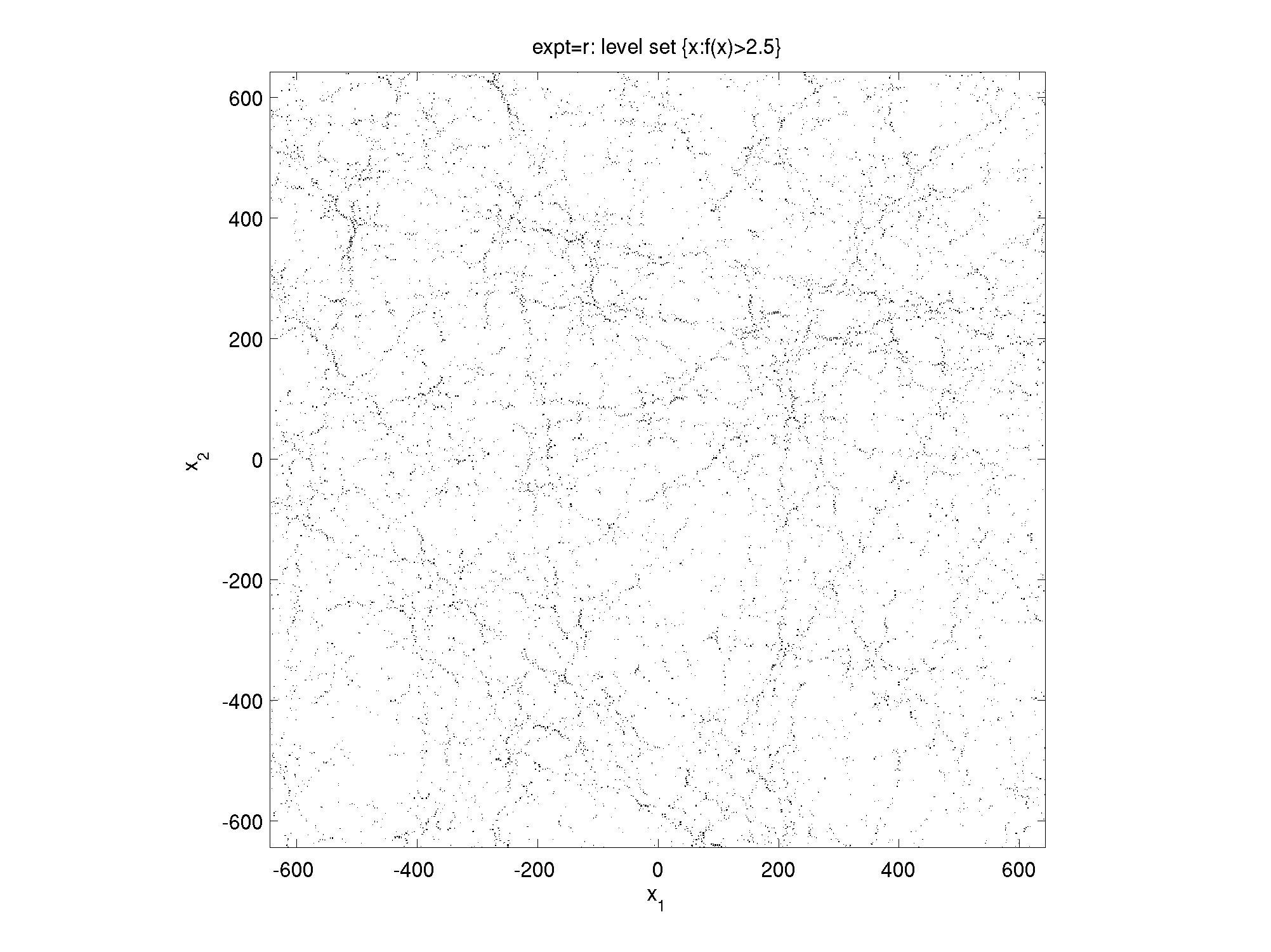
What does a typical (generalized) eigenfunction of the Laplacian in the unbounded domain R2, ie 2D free space, look like? If the eigenvalue is k2, then we are considering a random solution to the Helmholtz equation with wavenumber k. Say we choose unit wavenumber k=1 then the complex plane wave ein.x, with n is a unit direction vector, is an eigenfunction, but is not typical. A typical sample from the eigenspace with eigenvalue 1 can be constructed by a superposition of such waves traveling in all directions, with random complex phases. In other words, it is the 2D Fourier transform of Gaussian white noise restricted to the unit circle S1. Berry first proposed this as a model for quantum eigenfunctions of systems whose classical dynamics is chaotic, in the '70s.
Below we show some pictures, investigations, and the version on the surface of a sphere; but first some code.
Here is MATLAB code to generate samples from the random plane wave ensemble, for the above monochromatic case (α=1 in Sarnak's notation), and for the case of integrating over all wavenumbers [0,1] (α=0 or Fubini-Study in Sarnak's notation):
rpw2dfinufft.m.
See the MATLAB help for documentation and example usage.
It is O(N^2 log N) for a grid with N points on a side, and
gives by default around 8 digits uniform accuracy over the output domain.
Here are my old codes (OBSOLETE):
rpw2dnufft.m.
2D code:
rpw2dsample.m which needs codes
circle_blobs.m and src.m.
See the MATLAB help for documentation and example usage.
The code is spectrally accurate (with default parameter e=5
it has absolute errors of order 3e-4), and uses my own nonuniform FFT
implementation by resampling onto a uniform square grid of size 4N
on a side.
In 2014 I returned to this and realized that the NUFFT should only
need size 2N on a side,
so decided to use an existing NUFFT implementation.
naiverpw.m.
It was used for the 2000-wavelength boxes below in 2009; now in 2023
the above code rpw2dfinufft can do the same job on a laptop
in a few seconds.
Random plane waves was one of the topics addressed at the AIM Workshop on Topological complexity of random sets (Aug 2009). Here is my contribution to the workshop, and some data generated there is below.
Here are some pictures of samples of random plane waves, showing the real part, chosen with mean-square value 1, computed with the code linked below. Click on each to magnify:
| color plot | squared | extreme value set (|f|>2.5) | |
| 25 wavelengths box | 
| 
| 
|
| 200 wavelengths box | 
| 
| 
|
One might study the local box-counting (Kolmogorov) fractal dimension of the extreme-value sets via the slope of the log-log plot of the number of boxes vs box size. Here is such a plot (different curves are for the different extreme value cut-offs), compared to the same for a spatially-uncorrelated model. They are similar but the stringiness of the level-set shows up as a slight slope in the region before the asymptotic slope of 2 is reached.
Some movies generated at the workshop:
Here is a super-large plane-wave sample, showing the extreme-value set downsampled from 7000x7000 pixels, 2000 wavelengths across (click to magnify):
|
extreme-value set |f|>3.0 |
mean Radon projection of (bottom-left quarter of) f2 |
Notice how the Radon projection seems to have isolated bright spots (or bowties), as you'd expect for intense lines in coordinate space. It is an open problem how to prove something statistical which quantifies the `stringiness' visible to the eye in the above pictures and movies. One question is why the Radon, or Gaussian beam, basis, leads to apparent sparsity of coefficients.
Some references (also see AIM contribution above):
How about random plane waves on a sphere? This really means a random Laplace-Beltrami eigenfunction from within a degenerate eigenspace of large eigenvalue, or, equivalently, a random real sum of spherical harmonics of a given fixed degree. The resulting Gaussian random field is isotropic, and in the limit of large degree and zooming into a shrinking patch of the sphere, they tend to the above monochromatic random wave distribution on the plane.
Here are some examples, of the degree shown, computed for Misha Sodin and others over the years. In each case the black and white regions indicate the sign of the function (magnitude is not shown):
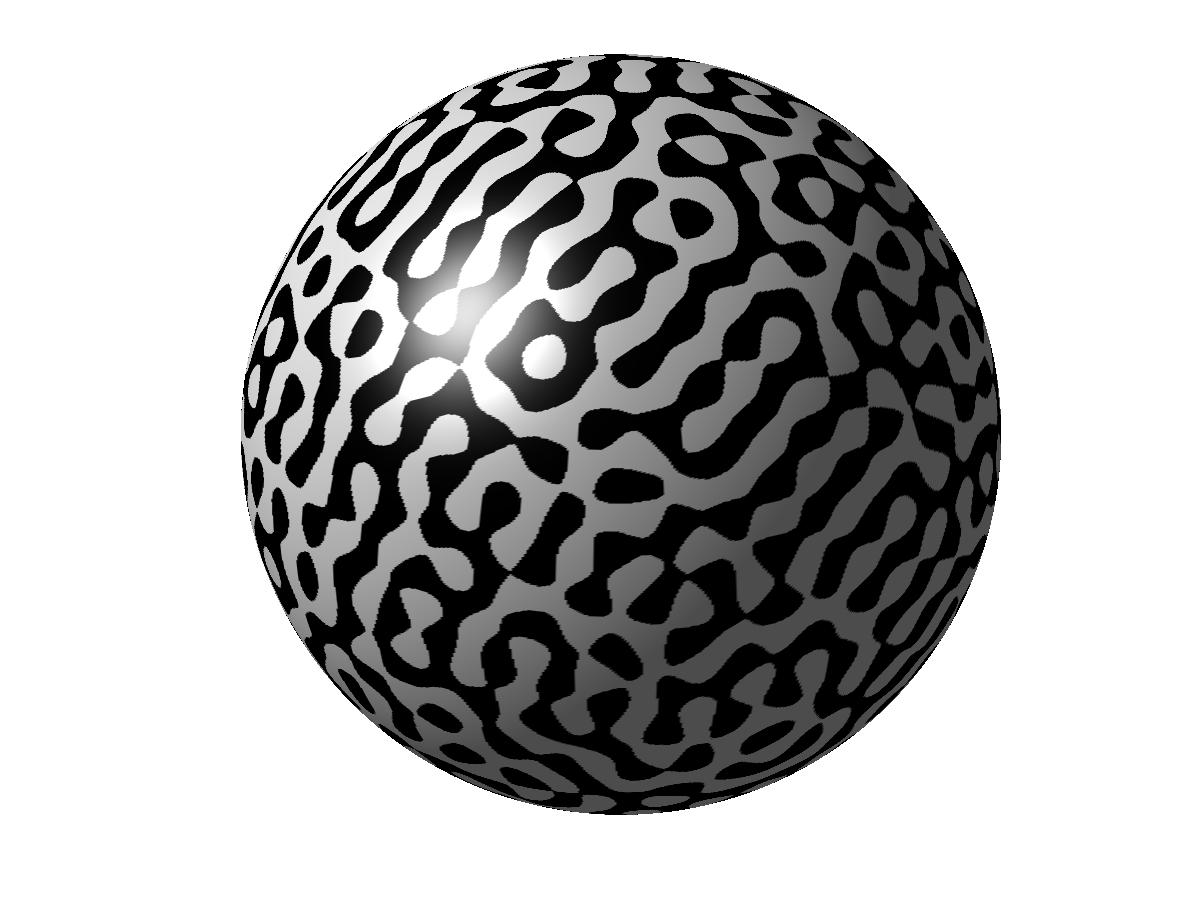
|
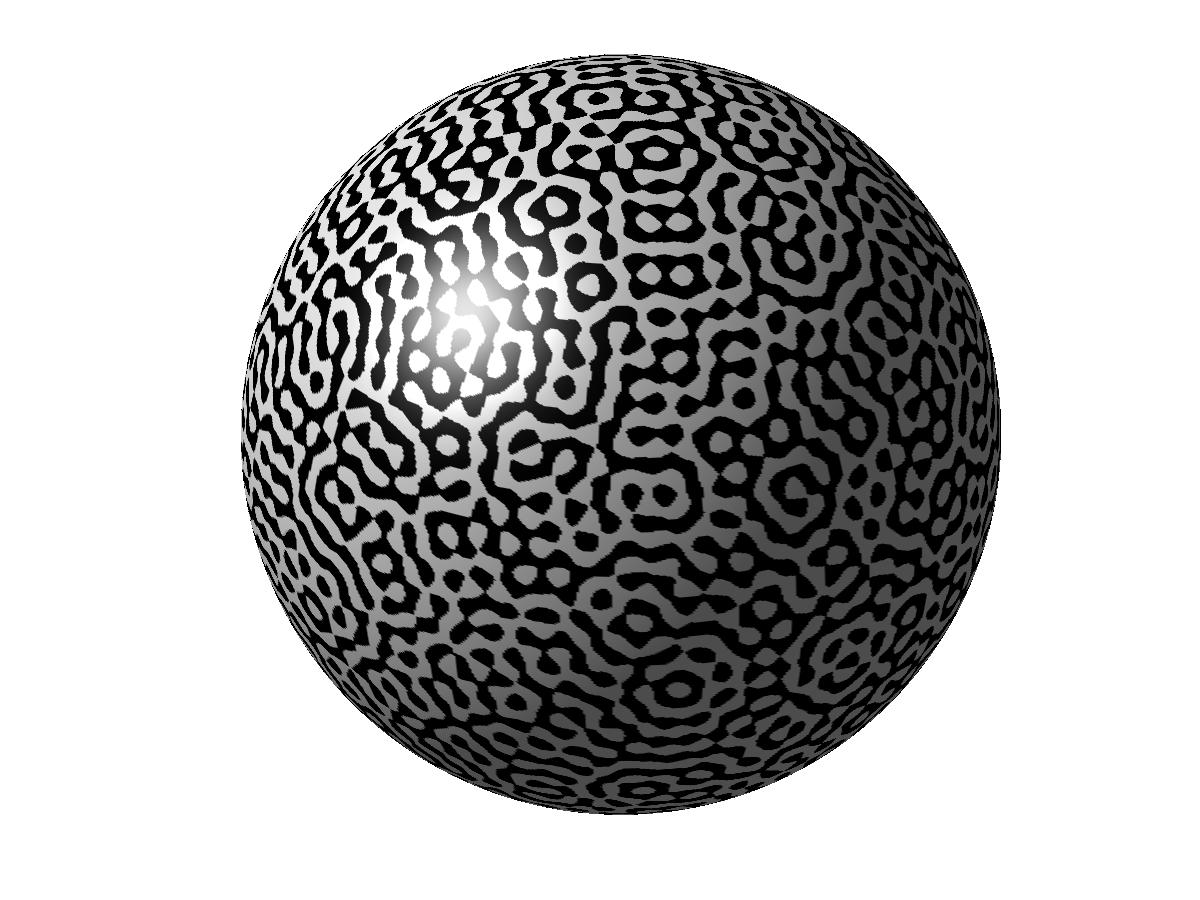
|
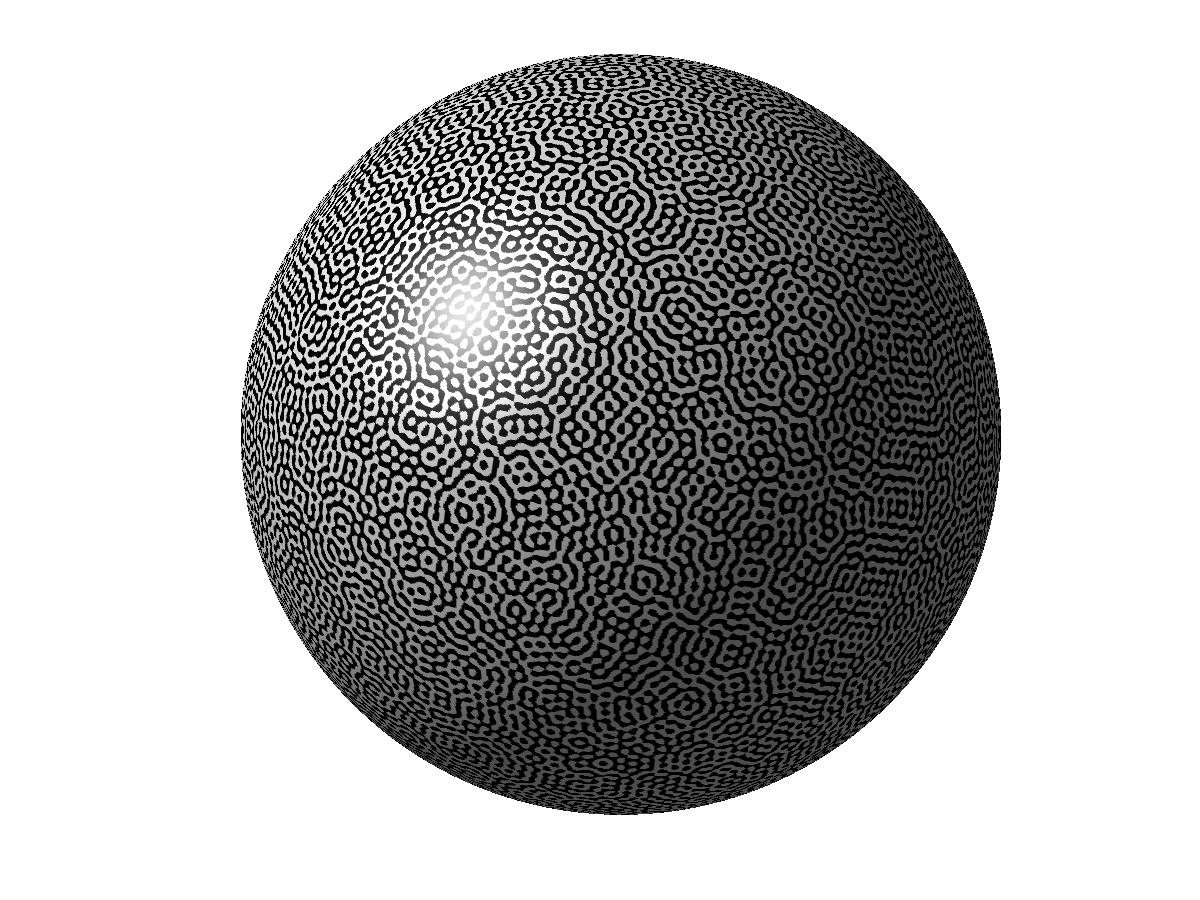
|
| degree=40 | degree=80 | degree=200 |
Finally here is are spherical equivalents of the α=0 Fubini-Study ensemble, a random sum of spherical harmonics from degree 0 up to sum maximum. They are more expensive to compute:
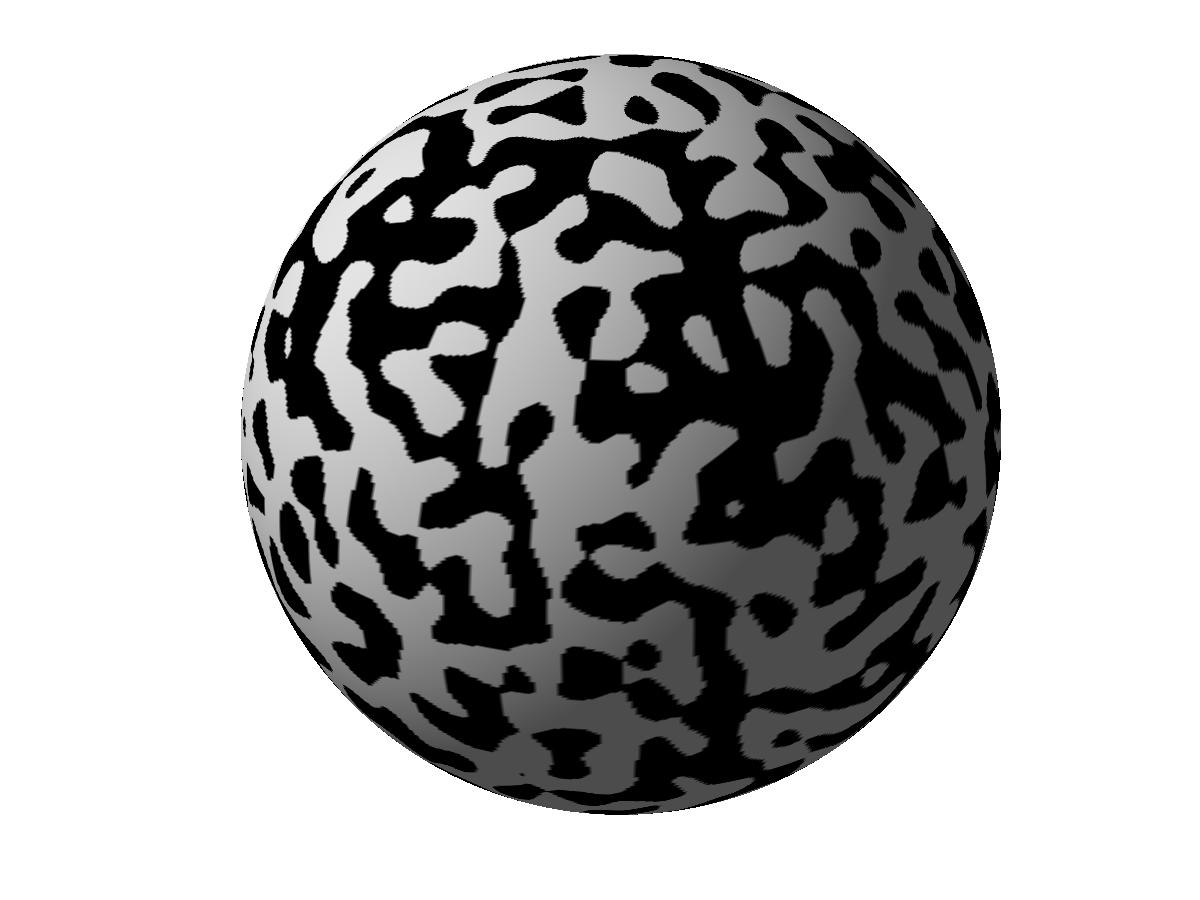
|
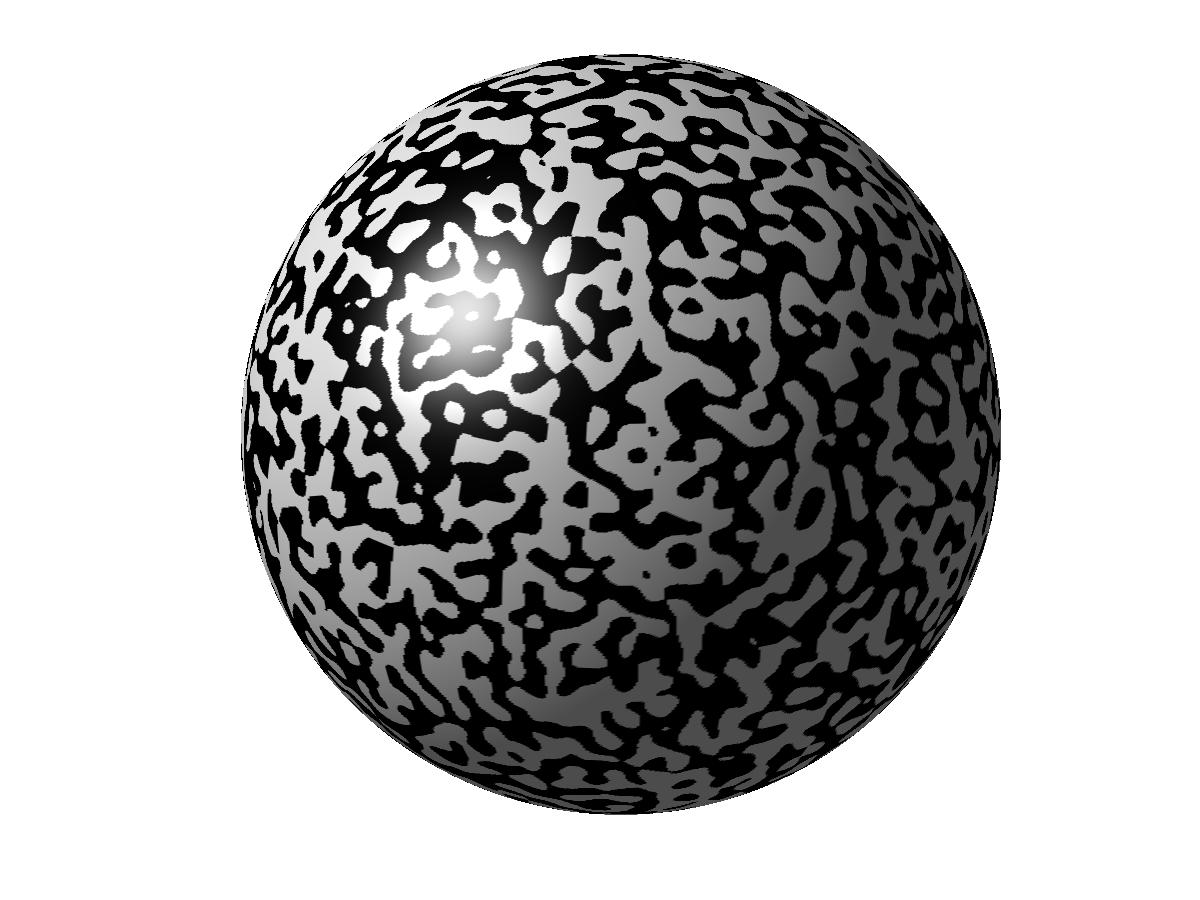
|
| degree<=40 | degree<=80 |
The MATLAB codes I used for the sphere cases are very crude, direct, and slow (cost grows as 4th power of max degree, when the grid resolves the fastest oscillations): randsph and randsph_multidegrees.
Continue to other research...